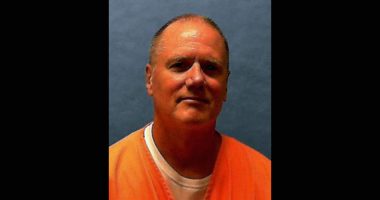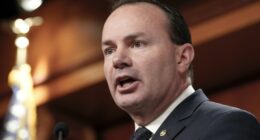
A group of residents surrounding the Flagler County airport in Palm Coast have for years complained about the constant stream of touch-and-go student flights, about noise, about pollution, and about the county’s own dismissive attitude toward them. It’s not a large group, and by some measures it’s minuscule. But its own noise can compete with the airport’s when it wants to, drawing attention from county and Palm Coast officials and raising questions about whether enough options are being explored.
On Monday, the County Commission heard a report on those issues from Airport Director Roy Sieger and Deputy County Administrator Jorge Salinas. Bottom line: their hands are tied. What measures they took to give residents a chance to air their complaints over four months did not prove constructive, and they have no intentions–no authority—to make any chances, especially since they’d be barred by federal regulations to make most of the sort of changes residents are demanding.
The county had clearly made efforts to study the issue and hear out residents rationally. But if it was an opportunity for the two officials at least to show some understanding for the complaints, to defuse frustrations and perhaps propose a more constructive mechanism to field concerns, they chose not to, undermining their own efforts and fueling the few voices against them.
They had neither sympathy nor much more than contempt, and at times overt contempt, for the residents. They reinforced the impression that, while the airport’s hands may be tied, the county’s attitude is aggravating matters where it could be de-escalating them. After all, this is the same government that a few years ago abruptly scrapped the airport advisory committee, which had been the only balance to Sieger’s otherwise imperious airport administration.
What Sieger did say mostly inflamed the audience. Touch-and-go is safer, at least for neighboring houses, Sieger said at one point as he was addressing the commission from the podium, since the aircraft is using momentum to get airborne again, and needs less runway space. It made sense. People grumbled behind him. Sieger, who does not like to be challenged and tends to respond gruffly, did exactly that: “I know these people don’t agree with me, but the end of the day, you bought a house next to an airport. Unfortunately, you bought a house next to an airport. We did not build an airport next to your house.”
It was a stunningly coarse response that put elected officials in a difficult position: they were not there to provoke residents but to provide them with some explanations. “These people” in the audience did not take Sieger’s statement kindly, prompting Commission Chairman Andy Dance to admonish them. Sieger, pressed on, as if enjoying the baiting: “I don’t really know if it’s a noise issue or just a perceived noise issue, if it’s more of an annoyance to the citizens,” he said moments later, again provoking grumbles and another Dance intervention.
Salinas was more polite. His calmer demeanor more ably hid the contempt his presentation conveyed, with Sieger at his side.
The county from June 3 to Oct 2 activated web portal enabling users to submit complaints. It drew 3,095 submissions from 12 users, or residents, three of whom submitted 98 percent of entries. That left just 73 submissions, Salinas said. Of those, one user submitted 46 entries. The county classified 81.5 percent of the entries as “unfounded,” while 574 were classified as requiring additional investigation.
Complaints were deemed “unfounded,” the airport director said, if they were filed between 7 a.m. and 10 p.m., when the airport permits the schools to do the majority of their flying. To the county and the airport, there are no grounds for complaints during those hours. To those who have been complaining, however, that misses the point: they want the airport to curtail the constant buzz of training flights. To them, the hours of operation are irrelevant.
Examples of complaints filed through the portal: “Directly over my home. For every single day this is not diverted, you will receive a new complaint. They wake me up every day it is not raining and from 7:06 until this email at 8:25 am, I’ve counted 24 flights directly over my home.” Or: “This is such a nuisance with this training schools. This needs to stop and they need to respect homes and taxpayer.” There were also non-complaints, such as: “I do not think there is a problem with aircraft noise. I’m sure there is a disgruntle few residents that would complain about anything! They knew they were moving close to an airport or should have. No change needed. The noise from I95 is 5xs more.”
Sieger contacted some of the people who made submissions. He spoke to them of the “voluntary noise abatement procedures” the county encourages flight-school operators to abide by. “One of the things that we’ve asked them is they make the turns in the green space,” Sieger said,
Salina said the portal was not effective. He concluded that just 10 residents out of 4,298 built-up lots within 2.5 miles of the airport (based on 2019
building data) used the portal. Some filed in rude comments, he said, and to keep the portal open would have generated more of the same. He had few words that would satisfy those complaining: “Staff will continue to monitor air traffic and transgressions, continue to educate pilots and flight schools regarding our voluntary noise abatement procedures,” he said.
Beyond that, the airport is preparing to publish a new website–though what relevance that had to noise issues is unclear–and Sieger will issue a new airport master plan. (The current website includes all current traffic patterns.) Some residents have requested that the airport test the lead content on airport property. That will be done. The master plan could op[en the door to an FAA noise study.
Sieger said he looked into landing fees, as other regional airports have, but pilots don’t favor that. “We took a lot of pushback, and not just from the local pilots, but also the big AOPA too,” he said, referring to the Aircraft Owners and Pilots Association. The fees could be between $3 and $6 per touch-and-go.
“DeLand made a big faux-pas on saying that they were charging landing fees to deter traffic,” Sieger said. “We can’t do that. That’s not what we’re doing. This is just if we wanted to start charging landing fees, landing fees would just be another revenue stream for the airport.” Local tenants with planes at the local airport could be exempt, so the flight schools would be exempt anyway.
He sought to impress on commissioners that night flying used to be an issue at the airport, with 25 to 30 planes flying past the 10 p.m. cut-off. That’s been reduced to seven or eight a night.
Does the county have the authority to restrict touch-and-go practices at the airport, as some residents who complain claim the county does? It does not, Sieger said categorically. “That authority only relies on the FAA. If the FAA deemed an operation of an aircraft to be unsafe, they are the ones that have to say it is unsafe,” he said, referring to the Federal Aviation Authority. “We have nothing to do with airspace once that aircraft leaves the ground.” He’s right. (For example, noise the planes emit while airborne is not subject to noise ordinances.)
Pennington disputed the breadth of Sieger’s conclusion, citing from an article to suggest that local governments have some “authority to promulgate reasonable, non arbitrary and non discriminatory regulations addressing aircraft noise and appropriate local interests.” Sieger said the airport has no issue with jet aircraft, which that approach may address–and about which local residents are not complaining.
As reasonable and unassailable as Sieger’s and Salinas’s factual findings and explanations were, their tone-deaf demeanor Monday likely will only ensure that the complaining will continue, likely shriller.
By the time Dance opened the floor to public comment, those speaking had only been as if tuned up by their own version of more-of-the-same dismissiveness from the county as Gina Weiss, who has led the charge on noise for all those years (but says she did not submit complaints through the portal), led it again that afternoon. She called the entire presentation “lies, lies, lies,” starting with the county’s refusal to conduct a noise study, and claiming on vague authority that “we should be compensated for every flight school plane that flies less than 500 feet over our homes.”
Other residents called the touch-and-go flights “a threat to our safety, health and welfare,” as one put it. “This board has been receiving heartfelt and fact filled complaints from exasperated residents for years,” she continued. “I cannot fathom a valid reason why the profits of flight schools would take precedent over the quality of life of the residents of Palm Coast, Flagler Beach, Bunnell and Flagler County, we’ve had enough gaslighting, bully behavior from the airport director and his posse and kicking the can down the road. It’s now time for action, common sense and to stand up to the pressure from those that profit from the destruction of our environment.”
It was ironically the former chair of the disbanded advisory committee, Les Abend–a pilot and airport tenant who’s had his own run-ins with Sieger–who offered a constructive suggestion. “Mr. Sieger is doing his best,” Abend said. “This is a script from every airport across the country. What I learned from some of the folks that have been up here speaking is that information is helpful. So rather than coming up here and complaining and supporting about this particular issue, I’ll volunteer my time. I’ll volunteer my time to talk about some of the issues that they have, because you can’t stop the airport. It’s a federally funded airport, and this is part of the practice of an airport, is to provide the training facility. It’s unfortunate, it makes noise, but I think education is very important for the public. I will take the public up in my airplane and explain what happens during a touch and go what happens during regular landing.”









